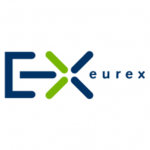IBM blockchain leader Jerry Cuomo using ‘shadowchains’ to launch moonshots

IBM has been building momentum behind blockchain by championing the Linux Foundation’s Hyperleder Project and creating its own Open Blockchain (OBC) among other things.
IBM’s vice president of blockchain Jerry Cuomo, who recently gave testimony before US Congress about the uses of the technology, likes the idea of a revolutionary IoT, blockchain-enabled insurance paradigm for driverless cars. Or perhaps it’s the more day-to-day business of migrating supply chains to blockchain.
“This is what makes it fun,” Cuomo told IBTimes. “So we are going to invent a new instrument around insurance, right; temporal liability or finer grain liability that’s going to be supported by trusted devices – cars. And you can sit back and say, ‘yeah I can see that happening, that will change everyday life’.”
Regarding the more quotidian business of upgrading global supply chains, he added: “But his supply chain has been this way for the past 30 years. You’ll say, ‘we are really going to change that?’ That’s a big deal.
“So in my definition these are moonshots,” said Cuomo. “This brings folks to the table to talk about blockchain and it gets them very excited. But where does the conversation go from there?”
Back in the real world, IBM is starting with incremental and a highly focused approach to applying blockchain, by starting with something called “shadowchain“.
Shadowchain
IBM has an institution called global finance, IBM Global Finance (IGF), which lends out about $44bn a year, generates something like 2.9 million invoices, and has about 4000 partners in its network. In addition, the system incurs some 25,000 time-consuming disputes in the course of a year (often they are very straightforward things like money borrowed in New Jersey being charged tax as if it were in New York). These disputes can tie up some $100m at any given time.
“No, I’m not suggesting the moonshot of immediately redoing our global financing, lending system on a blockchain. But we have now employed a shadow chain: my definition of shadowchain is it’s not replacing the primary business process, it’s being used to enrich that business process with a useful function that it currently doesn’t do.”
Cuomo said shadowchain would record key events across the lending process and help avoid unnecessary delays due to disputes.
“Today, before the blockchain enrichment to IGF, it would take about 40 days to resolve such a dispute. Now it’s taking about 10 days.
“You can imagine the capital that will free up; there’s 30 days that that money isn’t being tied up.”
IBM stressed that none of the trading partners are yet up on the blockchain today, but it is a step towards moving its lending process over to a blockchain, adding that this is a thing that could be tackled by any large global conglomerate with a similar financing profile.
Open Blockchain
IBM has spent some time kicking the tires of a number of blockchain fabrics, such as Bitcoin, Ethereum, Ripple, and has done proof of concepts with clients using these.
“We found gaps, in our ability to execute, for example. Some of these projects had LGPL (Lesser General Public Licence) licencing, which made it almost impossible for us legally to work with those technologies.
“We love Linux and Apache; those projects had pluggable architectures that allowed you to superimpose your innovation on top. And we saw that blockchain technology bases were prohibitive in that matter.
To address this and other issues, Cuomo and his team started building Open Blockchain about eight months ago. “It’s a permissioned blockchain but it’s permissive; you can liberally configure permissions to be very open. It supports notions of privacy, confidentiality and auditability.
“It’s pluggable, so we have the ability to plug in consensus algorithms; we have written about three inside IBM, since opensourcing OBC at the DC Blockchain Summit,” he said.
In order to create meaningful transactions in a Turing complete language, or languages, IBM introduced the notion of chaincode. In theory this allows users to build smart contracts in their language of choice. “In practice, we have plugged in, we have the Go language which we support, and we have a second implementation being worked on as part of the Hyperledger Project.”
Hyperledger Project
IBM has offered OBC code to the Hyperledger Project and hopes it will combine with the best ideas of some of the other code contributors like Digital Asset Holdings, Blockstream and Intel.
“We hope to have a single codebase that brings forward the best of these ideas. When that happens we will deprecate OBC in favour of Hyperleder,” said Cuomo.
Hyperledger member JP Morgan recently hosted a hackathon and code-sprint to work with the mix of code so far contributed to the project. Thus far the task of combining the contributed code, which is being overseen by the project’s technical steering committee, is coming close to realisation but is not quite there yet, as recently reported by Coindesk.
IBTimes asked Cuomo for his view on the process of assimilating disparate code and ideas. “I am pleasantly surprised, I guess is the word, on how well the team is working together,” he said. “I think there are a lot of observers and a handful of real coders, folks coming to the table with opinion on code. I would say there’s maybe three dominant voices in the technical side of the community and those voices are already converging.
“We all know what the endgame needs to be, and that there’s going to have to be give and take. There’s the IBM OBC thought and chaincode. I think people love the plugability of the platform. But then Blockstream and Digital Asset Holdings really like the UTXO model, the unspent transaction model that comes from Bitcoin. They like it because it’s been out there and it’s kind of a very simple transaction model.”
Cuomo said an objective of the code-sprint was to create a chaincode plug-in for UTXO. “I think, if successful, this merges some of the best ideas that DAH and Blockstream are bringing to the table.”
In terms of the history of standard-building, Cuomo cited Linux itself, and the good work and core assets brought to the table by BSD Unix, some modules of which have been preserved. Cuomo said when the Hyperledger engineers all sat down for the first time, the group was pleasantly surprised to find they all used the same sort of database components, RocksDB or LevelDB.
He said: “In the back of our mind we know what a good day looks like. A good day looks like one codebase with lots of energy around it. A bad day is fragmentation.”
R3 CEV
Another notable member of the Hyperledger Project is R3 CEV, the distributed ledger banking consortium whose technical leader is former IBM banking and enterprise architecture guru Richard G Brown. “We love the R3 folks by the way. I stay in very close touch with Richard who worked with me on Websphere.
“At one end of R3 they speak technology; at the other end of R3 they speak banking. So they are like a universal translator between what’s happening in the blockchain world to the banking world.
“And of course R3, I believe, has aspirations of providing banking frameworks that work on top of blockchain. We don’t have those aspirations inside Hyperledger. Our goal isn’t to serve one industry and only one industry; our goal is to serve all industries and provide the foundation for that.”
Cuomo said R3’s participation will ensure that Hyperledger can be used for banking framework. He mentioned the recent challenge involving a selection of start-ups to define the scope of an application around commercial paper.
“We took it as an opportunity to use our new cloud service on top of Bluemix. We built out to their specification of this application, in fact we open-sourced it after we built it, and we sat through their review process.
“Forty banks came in and kicked the tires and actually we were able to count the number of blocks on the blockchain that were created by these banks and transferred across one another, which is very cool. And they sat back and gave us feedback on how we did.
“Yes, we did very well! We got high points for providing a usable front end; so we provided a Node.js application on Bluemix. Bluemix has a very nice set of services for building out mobile and Web applications.
“We built a nice front end for the commercial paper trading. And we were also able to show them the back end working as well,” said Cuomo.
“So some vendors were very good at providing a nice glossy front end; some vendors were very good at providing detailed back end. We were able to show both sides of the coin.”




























